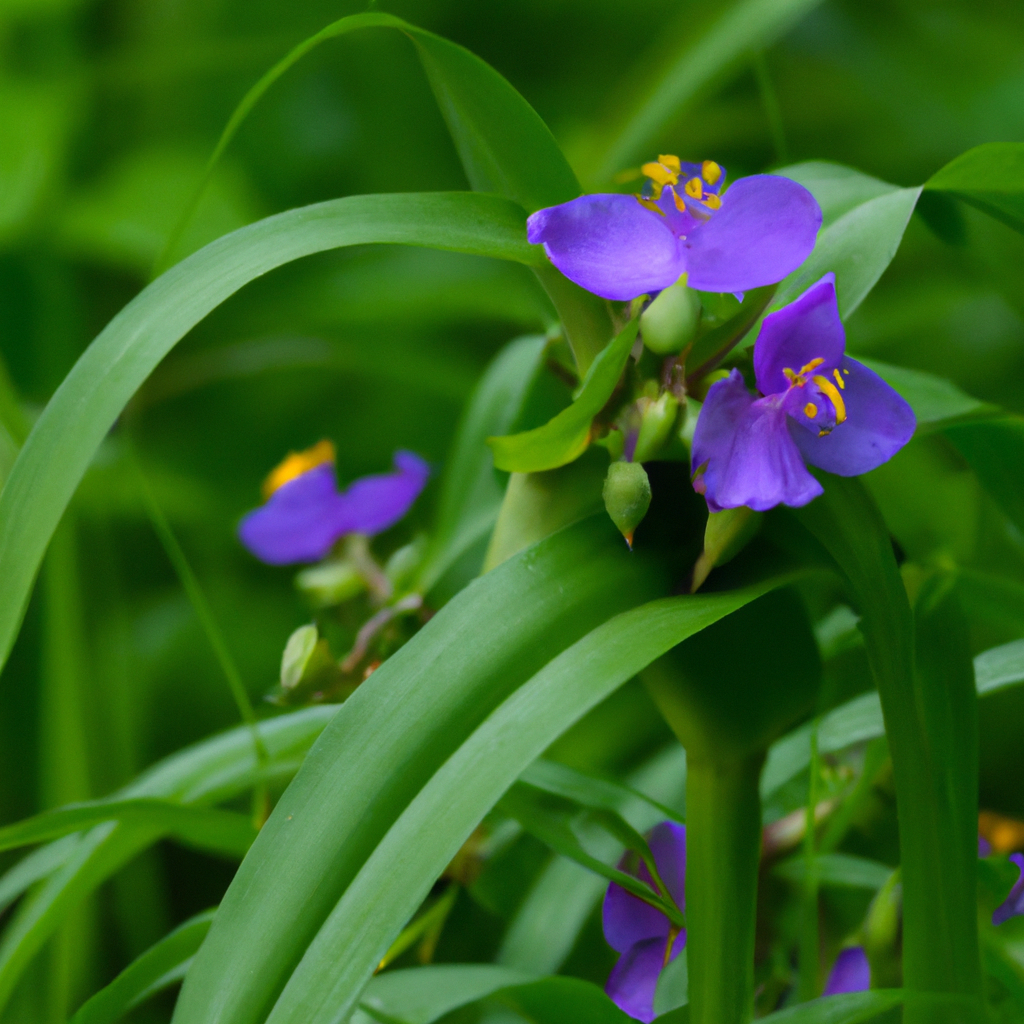Biological Name:
Tradescantia occidentalis (Prairie-Spiderwort)
Natural Habitat:
Prairie-Spiderwort: This plant is native to North America and grows in a variety of habitats, including fields, meadows, and along roadsides.
Description:
Prairie-Spiderwort is a perennial weed native to North America. It is a member of the dayflower family and is easily identified by its delicate blue or purple flowers. The plant has a slim erect stem that can grow up to 3 feet tall and produces small triangular leaves.
Frequently Asked Questions (FAQs)
Q: Where is the best place to plant spiderwort?
A: Spiderworts typically grow in moist, well-drained, and acidic (pH 5 to 6) soil, though I have found the plants to be quite forgiving in the garden and tolerant of many soil conditions. Spiderwort plants do best in partial shade but will do equally well in sunny areas as long as the soil is kept moist.
Source
Q: Should spiderwort be deadheaded?
A: Deadheading may be necessary to encourage repeated blooming of your spiderwort. As a native wildflower, spiderwort does not have any serious pest or disease problems.
Source
Q: Does spiderwort come back every year?
A: Growing Season Pruning Spiderworts will often bloom again in late summer to fall if you cut them back in midsummer after their first flush of bloom. The Missouri Botanical Garden recommends cutting back the plant hard, almost to the ground, after the foliage fades and the temperatures get hot.
Source
Q: What are the uses of spiderwort?
A: Spiderwort is not only attractive, it is also edible. Try the flowers fresh on a salad or candied for a sweet treat. Stems and leaves can be eaten raw and leaves can also be cooked. The leaves are mucilaginous; the “juice†can be used to soothe insect bites in the same way one would use aloe.
Source
Q: Is spiderwort good for anything?
A: Tradescantia ohiensis also has medicinal properties. The plant’s crushed leaves are purported to alleviate the sting of insect bites while a tea made out of boiled roots has use as a laxative. It has been an eye-opening experience to learn so much new information about a familiar garden face.
Source
Q: Is spiderwort toxic to humans?
A: Warning: POISONOUS PARTS: Leaves. Minor skin irritation if touched. Symptoms include skin irritation with redness and itching, but of low risk. Toxic Principle: Unidentified, possibly oxalate crystals.
Source
Q: Is spiderwort toxic to dogs?
A: Two toxic perennial spring-flowering plants are lily-of-the-valley and daffodils, and both are toxic to humans and pets. An alternative to lily-of-the-valley is Virginia spiderwort, and instead of daffodils, plant spring crocuses. Avoid fall crocuses, though, which are highly toxic.
Source
Q: Is spiderwort considered invasive?
A: Small leaf spiderwort is native to South America and is considered invasive in Florida, South Africa, Australia and New Zealand. It is a rhizomatous and perennial groundcover that can form carpet-like monocultures (up to 90cm deep) in moist and shady habitats.
Source
Q: Can you eat spiderwort plants?
A: Virginia spiderwort, Tradescantia virginiana, is a hardy native wildflower to some and a hard-to-control weed to others. All plant parts are edible but the most used parts are the leaves and flowers. Leaves can be used in salads, in soups or for teas while flowers can be candied or used in salads.
Source
Q: Do spiderworts spread?
A: The spiderwort does have very showy, beautiful flowers, but these plants spread and rapidly cover areas that are not cultivated, or are infrequently mowed like roadside right-of-ways, fallow fields, or hayfields.
Source
Q: Why is spiderwort endangered?
A: The main threat to this species’ survival in our province is the loss or alteration of its habitat.
Source
Q: Should you cut back spiderwort?
A: A: Spiderwort usually ends up looking pretty ratty by mid-summer after it’s done blooming. This is a tough enough perennial that you can cut the whole plant back to the ground, and within a few weeks, it’ll push up fresh new growth and look so much better the rest of the season.
Source
Q: Can spiderwort grow in full shade?
A: Spiderwort is a perennial wildflower that spreads easily by reseeding, and thrives in both sun and shade. However, the plant blooms less prolifically in shade. Spiderwort propagates easily from root division and from stem cuttings. Once established, it thrives with little assistance.
Source
Q: How do you get rid of spiderwort?
A: As soon as the leaves decline and spent blossoms have been removed, cut the plant down. Do not mow over these plants as that just encourages more plants to form. Despite all your efforts to discourage germination of any seeds, you may still find some sprouting. Remove them and carefully weed the area.
Source
Q: Is spiderwort the same as widows tears?
A: The vegetable and flower seed catalogs arrive almost daily. In one of them, a beautiful blossom was labeled “Widow’s Tears.†This is a fairly common perennial plant that is found in many flowerbeds called by its common name, Spiderwort.
Source
Q: How fast does spiderwort spread?
A: Outdoors spiderwort is considered an overly aggressive grower. It grows equally fast indoors, but it can be contained. It grows about an inch a week, which is why it’s also called an inch plant. Expect a full-grown plant in about six months after it’s planted as a seedling.
Source

